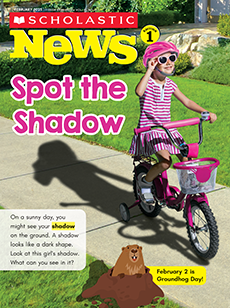A guide for using our resources
Children will learn about one way people have reused ocean trash.
Vocabulary: ocean, sculptures, aware
Social Studies Focus: Earth Day
CCSS (and states that have similar standards): RI.1.1 key details; RI.1.3 problem and solution; RI.1.5 text features; RI.1.10 read and discuss first-grade texts; RF.1.3.A digraphs; L.1.2.A capitalization
Simple, spectacular ideas to boost your lessons.
Paired Text Suggestion: Thank You, Earth: A Love Letter to Our Planet by April Pulley Sayre
Paired Text Suggestion: Thank You, Earth: A Love Letter to Our Planet by April Pulley Sayre
- The poetic love letter and captivating photographs in this book celebrate our planet and encourage the reader or listener to consider “What part of Earth am I most thankful for?”
Scavenger Hunt: Find the Trash
Scavenger Hunt: Find the Trash
- Use the visuals provided by Washed Ashore to have a visual scavenger hunt. Can your students spot pieces of trash in the sculptures?
- Follow this link to view the scavenger hunt on Washed Ashore’s website: bit.ly/3lEkdix
Punctuation Hunt: Question Marks and Exclamation Marks
Punctuation Hunt: Question Marks and Exclamation Marks
- After reading, ask students to circle all the question marks they can find. Then have them use a different color marker or crayon to circle the exclamation marks.
Hands-On Activity: Trash Art Display
Hands-On Activity: Trash Art Display
Skill: conservation, design
Materials: empty container, glue, tape, various art materials
- Place a collection box at the front of the room for the class to keep clean trash. Write down ideas of items that can go in the box instead of the garbage and tape it to the box. Suggestions: old markers, bottle caps, crayon stubs, scraps of paper, toilet paper rolls, rinsed-out plastic bottles, etc.
- When the box is full, allow students to take three or four items each. Challenge students to use glue and tape to make a sculpture.
- Provide additional art materials for students to add their finishing touches.
- Invite teachers, staff , or another class to visit your trash art display!
